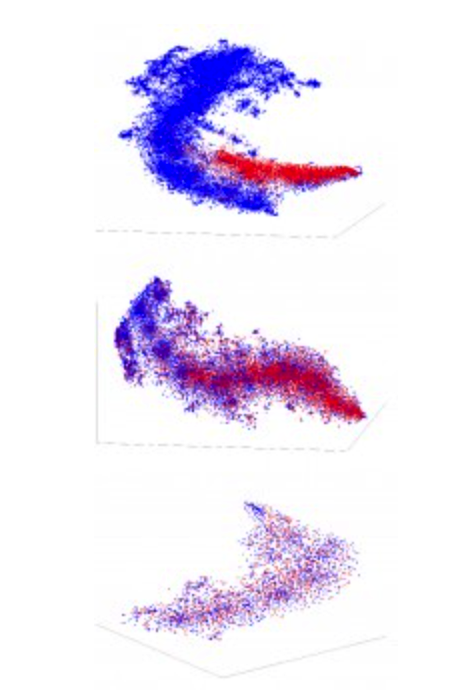Machine Learning Model Reduces Uncertainty in Breast Cancer Diagnosis
 A novel, probabilistic machine learning model developed by Michigan Technological University researchers can evaluate the uncertainty in breast cancer diagnoses as it classifies benign and malignant tumors, helping reduce the risk of false positives and false negatives. The Michigan Tech model differentiates between negative and positive classes by analyzing the images, which at their most basic level are collections of pixels. In addition to this classification, the model can measure the uncertainty in its predictions.
A novel, probabilistic machine learning model developed by Michigan Technological University researchers can evaluate the uncertainty in breast cancer diagnoses as it classifies benign and malignant tumors, helping reduce the risk of false positives and false negatives. The Michigan Tech model differentiates between negative and positive classes by analyzing the images, which at their most basic level are collections of pixels. In addition to this classification, the model can measure the uncertainty in its predictions.
In their paper recently published in the journal IEEE Transactions on Medical Imaging, mechanical engineering graduate students Ponkrshnan Thiagarajan and Pushkar Kharinar and Susanta Ghosh, assistant professor of mechanical engineering and machine learning expert, outline their novel probabilistic machine learning model, which outperforms similar models.
“Any machine learning algorithm that has been developed so far will have some uncertainty in its prediction,” Thiagarajan said. “There is little way to quantify those uncertainties. Even if an algorithm tells us a person has cancer, we do not know the level of confidence in that prediction.”
In the medical context, not knowing how confident an algorithm is has made it difficult to rely on computer-generated predictions. The present model is an extension of the Bayesian neural network — a machine learning model that can evaluate an image and produce an output. The parameters for this model are treated as random variables that facilitate uncertainty quantification.
Now that their study has been published, the researchers will extend the model for multiclass classification of breast cancer. Their aim will be to detect cancer subtypes in addition to classifying benign and malignant tissues. And the model, though developed using breast cancer histopathology images, can also be extended for other medical diagnoses.
“Despite the promise of machine learning-based classification models, their predictions suffer from uncertainties due to the inherent randomness and the bias in the data and the scarcity of large datasets,” Ghosh said. “Our work attempts to address these issues and quantifies, uses and explains the uncertainty.”
Ultimately, Thiagarajan, Khairnar and Ghosh’s model itself — which can evaluate whether images have high or low measures uncertainty and identify when images need the eyes of a medical expert — represents the next steps in the endeavor of machine learning.
Related Articles
Citation
Machine Learning Model Reduces Uncertainty in Breast Cancer Diagnosis. Appl Radiol.
December 6, 2021